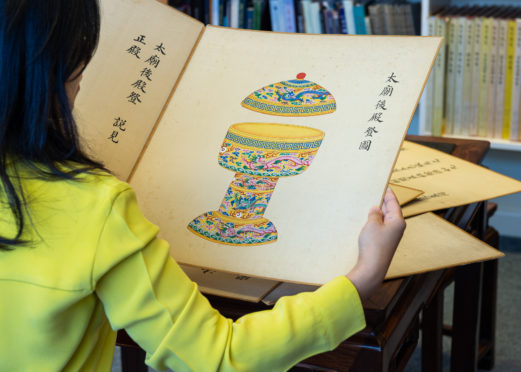Rare paintings created for the last great emperor of China, and once owned by a lieutenant from the north-east, are expected to sell for up to £50,000.
The 12 paintings are on 10 album leaves from the Illustrated Regulations for Ceremonial Paraphernalia of the Present Dynasty, and were crafted by an anonymous court painter between 1750 and 1759 for Qianlong’s court.
Thought to have been housed at one time in Beijing’s Old Summer Palace, the paintings are intricately illustrated on silk with ink, colour and gilt.
They were created for Qianlong – who ruled from 1735 to 1796 during the Qing dynasty.
Decades after his death, Qianlong’s story merged with that of Captain William Gordon Chalmers.
Born in the Aberdeenshire hamlet of Monkshill, near Fyvie, he became a lieutenant in the 51st Bengal Native Infantry in January 1857.
Three years later he acquired the paintings while he was serving in the Second Opium War at the Taku Forts near Tianjin and in Beijing.
He died in 1868 at Kussowlie, Himachal Pradesh, India.
A cenotaph bearing his name and those of other members of the Chalmers family, including his father Charles, who was an advocate in Aberdeen, can be found in St Peter’s Church Cemetery in Fyvie.
The paintings he owned will go up for sale with a pre-auction value of up to £50,000, at the prestigious Woolley and Wallis Salerooms in Salisbury on Tuesday.
They were acquired from his family in 1950.
Freya Yuan-Richards, a specialist in Chinese paintings, said: “The original album had over 1,300 pages in it, but the whereabouts of most of it is unknown.
“There are examples in the Victoria and Albert Museum, the British Library, the National Museum of Scotland and other museums; and it is likely that others exist in private collections, but pages rarely make it onto the open market.
“To have 10 pages from this album come onto the market at one time presents a unique opportunity for collectors to try and acquire something so closely linked to the Qianlong Emperor, who is so important as far as Chinese art heritage is concerned.
“The album shows the emperor’s meticulous eye for ritual and ceremony, with the calligraphy by each object explaining not only how the item was to be used, but also detailed instructions as to how it could be reproduced to the highest standard.
“We have already had a good deal of interest in these paintings and we anticipate strong bidding when they come under the hammer and I’m excited to see how they will perform on the day.”
Registration for online or telephone bidding closes at noon on Monday.
